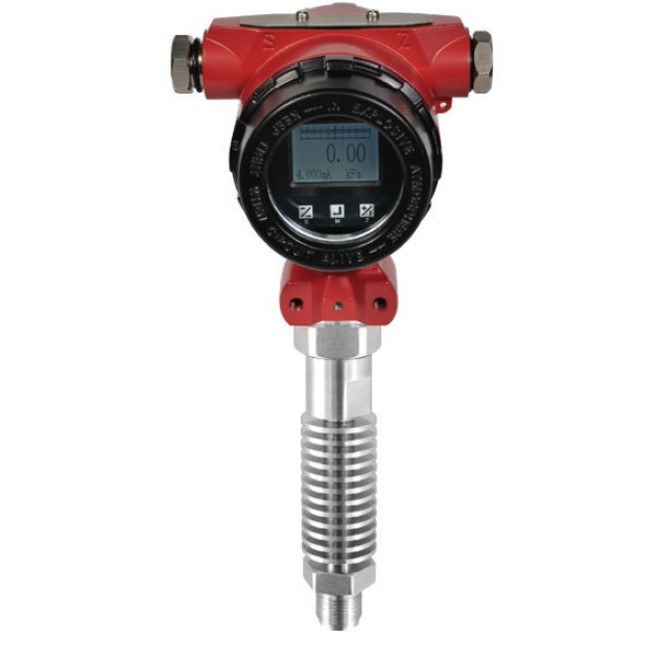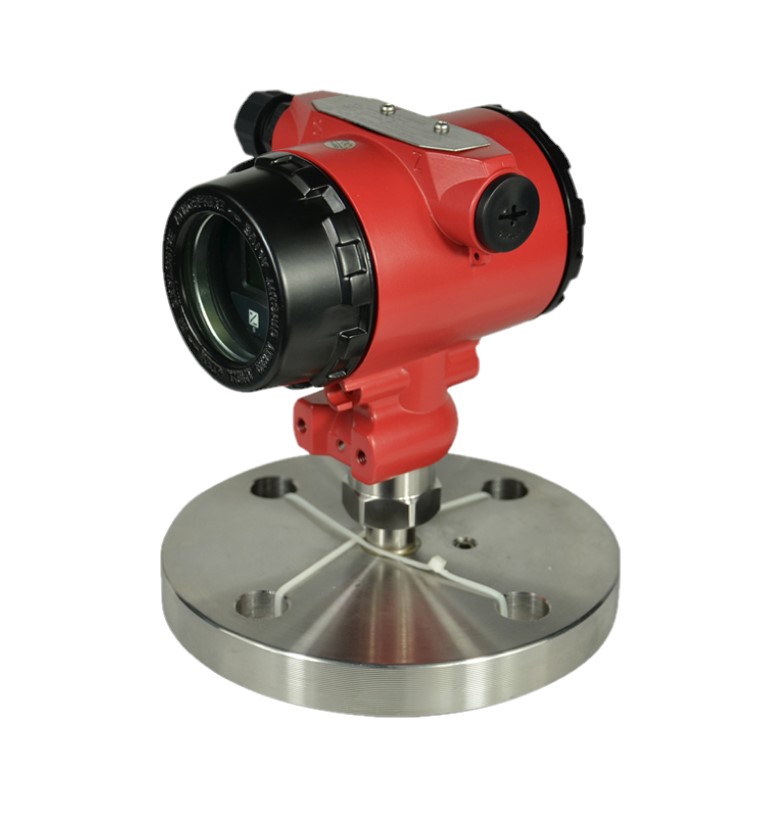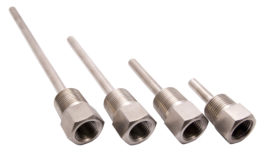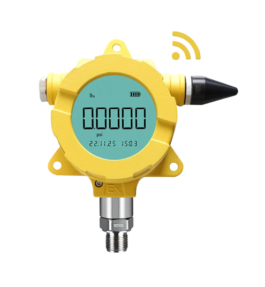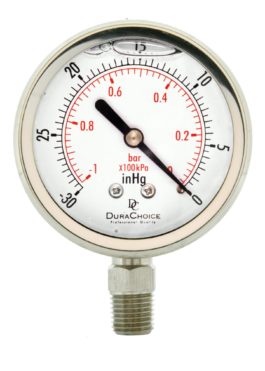Description
A pressure transmitter is a sophisticated device designed to measure the pressure of gases or liquids in various industrial and scientific applications. It plays a crucial role in ensuring accurate pressure readings, which are essential for the safe and efficient operation of processes across numerous sectors, including oil and gas, chemical processing, water treatment, and manufacturing.
A pressure transmitter primarily converts the pressure measurement into an electrical signal that control systems, data acquisition systems, or operators can easily interpret and utilize. This conversion process involves several key components and technologies, each contributing to the transmitter’s overall performance and accuracy.
The Core
At the core of a pressure transmitter is its sensing element, which is responsible for detecting the pressure applied to it. There are several types of sensing technologies used in pressure transmitters, each offering distinct advantages depending on the application. Common sensing technologies include strain gauges, capacitive sensors, piezoelectric sensors, and optical sensors.
Strain gauge technology is one of the most widely used methods for pressure measurement. It involves bonding a strain gauge to a pressure-sensitive diaphragm. When you apply pressure, the diaphragm deforms and changes the strain gauge’s electrical resistance. The system then converts this resistance change into an electrical signal that represents the applied pressure. Users value strain gauge-based transmitters for their accuracy, stability, and ability to handle a wide range of pressures.
Capacitive
Capacitive technology operates on the principle that pressure-induced deformation of a diaphragm affects the capacitance between two electrodes. As pressure changes, the diaphragm’s movement alters the distance between the electrodes, which in turn changes the capacitance. The system converts this change into an electrical signal proportional to the pressure. Capacitive pressure transmitters, known for their high accuracy and sensitivity, suit applications requiring precise measurements.
Piezoelectric technology utilizes piezoelectric crystals that generate an electrical charge when subjected to pressure. Bond these crystals to a pressure-sensitive element, where the pressure-induced deformation generates a charge. The system then measures and converts this charge into a pressure reading. Piezoelectric transmitters are particularly useful for measuring dynamic pressures and high-frequency signals.
Optical
Optical technology is a more advanced approach that employs optical sensors to detect changes in light properties caused by pressure variations. This method is less common but provides advantages in applications where electromagnetic interference is a concern or where extremely high pressures are involved.
Categorize pressure transmitters into several types based on their pressure measurement capabilities. Gauge pressure transmitters measure pressure relative to atmospheric pressure and commonly serve in systems where atmospheric pressure acts as the reference. Absolute pressure transmitters measure pressure relative to a perfect vacuum and fit applications that require absolute pressure measurements, such as in vacuum systems or aerospace.
Differential Pressure Transmitters
Design differential pressure transmitters to measure the difference between two pressure points, making them ideal for applications like monitoring pressure drops across filters or other process elements. Use static pressure transmitters to measure pressure in a static environment, often for reference pressure measurements or calibration purposes.
The installation of a pressure transmitter requires careful consideration of several factors to ensure accurate and reliable operation. The transmitter must be mounted in a location that is clean, accessible, and suitable for its size and type. The orientation of the transmitter is also important, as some models have specific mounting requirements to ensure proper functioning.
Process Connection
Prepare the process connection of the transmitter by cleaning the connection point to remove any debris, rust, or contaminants. This step is critical for creating a secure and leak-proof connection. Install the transmitter into the process connection or attach it using the appropriate fittings. Apply thread sealant to the male threads if needed and tighten the connections to the recommended torque specifications to prevent leaks.
Electrical connections are another crucial aspect of transmitter installation. Connect the power supply according to the manufacturer’s wiring diagram to provide the necessary electrical power for operation. Wire the output signals from the transmitter to the control system or data acquisition equipment to enable data transmission and integration with other systems. It is essential to verify that all electrical connections are secure and properly insulated to prevent electrical issues.
Calibration
Once installed, the pressure transmitter must be calibrated to ensure accurate readings. Calibration involves adjusting the transmitter to match known pressure values or standards. This process may require applying simulated pressure conditions and checking the transmitter’s response. After calibration, the transmitter should be tested to verify its accuracy and performance. This includes checking for leaks and ensuring that the output signals are consistent with the applied pressure.
Maintaining a pressure transmitter involves regular inspection, calibration, and cleaning to ensure continued accuracy and performance. Inspecting the transmitter for signs of wear, damage, or leaks helps identify potential issues before they affect operation. To maintain measurement accuracy, perform calibration periodically. Also, clean the transmitter’s connections and components to prevent dirt or contaminants from building up.
Limitations
Despite their many advantages, pressure transmitters also have some limitations. High-precision transmitters can be expensive, which may impact budget constraints, particularly in large-scale installations. The complexity of advanced transmitters with digital communication and multiple features can also require specialized knowledge for installation and configuration. Regular maintenance is necessary to ensure reliable performance. Furthermore, some transmitters may be sensitive to extreme environmental conditions, limiting their use in harsh environments unless specially designed.
In summary, pressure transmitters are essential instruments for measuring and monitoring pressure in various industrial and scientific applications. Their ability to convert pressure measurements into electrical signals provides valuable data for process control, safety, and efficiency. In addition, by understanding the different types of pressure transmitters, their operating principles, installation requirements, and maintenance needs, users can effectively utilize these devices. This understanding ensures optimal performance and reliability in their applications.
Are you looking for Differential Pressure Transmitters?
Specifications
Differential Pressure Transmitter Specifications
| |
| Ranges | 0.25 mbar - 7.5 mbar
1.2 mbar - 62.3 mbar
6.2 mbar - .62 bar
24.9 mbar - 2.49 bar
.20 bar - 20.6 bar
|
| Diaphragm Material | 316L SST, Alloy C-276, Alloy 400 |
| Temperature Limits | Ambient: -40 to 185 F
Storage: -50 to 230 F |
| Communication Options | Modbus RTU, HART |
| Output Options | 4-20MA, 0-10vdc |
| LCD | Yes |
Connection Ends
Pressure transmitters are critical instruments used in various industrial applications to accurately measure and transmit pressure readings for monitoring and control purposes. These transmitters are available with different connection ends, including Male National Pipe Thread (MNPT), flanged, and Tri-clamp sanitary connections, each offering unique advantages and suitability for specific applications.
MNPT Connection:
Pressure transmitters with MNPT connections feature male threads designed to be screwed into female-threaded pipes or fittings. This type of connection provides a secure and leak-proof attachment, making it suitable for applications where a reliable seal is essential. MNPT connections are commonly used in industrial settings where process lines are outfitted with NPT fittings for easy installation and maintenance. Pressure transmitters with MNPT connections are versatile and compatible with a wide range of piping systems, offering flexibility in installation and ensuring a tight seal for accurate pressure measurement.
Flanged Connection:
Pressure transmitters with flanged connections feature flat, circular discs with holes for bolting onto flanged pipes or equipment. Flanged connections provide a sturdy and stable attachment, ideal for high-pressure applications where secure mounting is crucial. The bolted flange connection ensures a tight seal, preventing leaks and maintaining pressure integrity. Flanged pressure transmitters are commonly used in industries such as oil and gas, chemical processing, and power generation, where reliable and robust connections are required. The flange design allows for easy installation and removal of the transmitter, facilitating maintenance and calibration procedures.
Tri-clamp Sanitary Connection:
Pressure transmitters with Tri-clamp sanitary connections are designed for hygienic applications in industries such as food and beverage, pharmaceuticals, and biotechnology, where cleanliness and sterility are paramount. The Tri-clamp connection consists of a sanitary gasket and clamp that securely seal the transmitter to sanitary process equipment without any crevices or threads that could harbor contaminants. This connection type ensures easy disassembly and cleaning for applications requiring frequent sterilization and product changeovers.
In summary, pressure transmitters with MNPT, flanged, and Tri-clamp sanitary connections offer versatile solutions for a wide range of industrial applications, each with its unique benefits in terms of installation ease, reliability, and suitability for specific industry requirements. Selecting the appropriate connection type is crucial to ensure optimal performance, longevity, and safety of pressure measurement systems in various industrial processes.
Types of Pressure Transmitters
A Comprehensive Overview
Installation
Proper installation of pressure transmitters is crucial to ensure accurate readings, reliable performance, and longevity. Here’s a step-by-step guide to installing pressure transmitters:
Preparation
Verify Specifications:
-
- Action: Check that the pressure transmitter’s specifications match the application requirements, including pressure range, output signal, and material compatibility.
- Purpose: Ensures the transmitter is suitable for the intended use and environment.Inspect Equipment:
- Action: Examine the pressure transmitter and associated components for any visible damage or defects.
- Purpose: Identifies any issues before installation that could affect performance.
- Gather Tools and Materials:
- Action: Collect all necessary tools and materials, such as wrenches, thread sealant, mounting brackets, and calibration equipment.
- Purpose: Ensures you have everything needed for a smooth installation process.
2. Installation Site Preparation
- Prepare the Mounting Location:
- Action: Ensure that the mounting location is clean, accessible, and appropriate for the transmitter’s size and type.
- Purpose: Provides a stable and secure base for accurate measurements.
- Ensure Proper Orientation:
- Action: Check the transmitter’s orientation requirements, such as horizontal or vertical installation, based on the manufacturer’s specifications.
- Purpose: Ensures correct operation and accuracy of the transmitter.
3. Mounting the Pressure Transmitter
- Install the Mounting Bracket:
- Action: Attach the mounting bracket to the designated location using appropriate hardware.
- Purpose: Secures the transmitter in place and provides support.
- Connect the Transmitter:
- Action: Align the transmitter with the mounting bracket and secure it using the provided fasteners.
- Purpose: Ensures that the transmitter is firmly attached and correctly positioned.
4. Connecting to the Process
- Prepare the Process Connection:
- Action: Clean the process connection (e.g., pipe or flange) to remove debris, rust, or contaminants.
- Purpose: Ensures a clean, smooth surface for sealing and prevents leaks.
- Install the Pressure Transmitter:
- Action: Thread the pressure transmitter into the process connection or attach it using the appropriate fittings.
- Purpose: Creates a secure and leak-proof connection with the process.
- Apply Thread Sealant:
- Action: If required, apply a suitable thread sealant to the male threads of the pressure transmitter.
- Purpose: Prevents leaks and ensures a tight seal.
- Tighten Connections:
- Action: Use the appropriate tools to tighten the connections to the recommended torque specifications.
- Purpose: Ensures a secure fit and prevents leakage.
5. Electrical Connections
- Connect Power Supply:
- Action: Connect the power supply to the pressure transmitter, following the wiring diagram provided by the manufacturer.
- Purpose: Provides the necessary electrical power for operation.
- Connect Output Signals:
- Action: Wire the output signals from the transmitter to the control system or data acquisition equipment.
- Purpose: Allows for data transmission and integration with control systems.
- Check Electrical Connections:
- Action: Verify that all electrical connections are secure and properly insulated.
- Purpose: Prevents electrical issues and ensures reliable signal transmission.
6. Calibration and Testing
- Perform Initial Calibration:
- Action: Follow the manufacturer’s calibration procedure to ensure the transmitter is providing accurate readings.
- Purpose: Ensures that the transmitter is correctly calibrated for the application.
- Test the Transmitter:
- Action: Simulate pressure conditions or apply known pressure values to test the transmitter’s response and accuracy.
- Purpose: Verifies that the transmitter is functioning correctly and providing accurate measurements.
- Check for Leaks:
- Action: Inspect the process connections and the transmitter for any signs of leakage while applying pressure.
- Purpose: Ensures that all connections are secure and leak-free.
- Verify Output Signals:
- Action: Check the output signals against known reference values or calibration standards.
- Purpose: Confirms that the transmitter is providing accurate and consistent output.
7. Final Steps
- Secure and Protect:
- Action: Ensure that all connections are secure, and the transmitter is protected from environmental factors such as moisture or extreme temperatures.
- Purpose: Protects the transmitter from damage and ensures reliable operation.
- Document Installation:
- Action: Record details of the installation, including transmitter specifications, installation location, calibration settings, and any adjustments made.
- Purpose: Provides a reference for future maintenance or troubleshooting.
- Inform Operators:
- Action: Brief operators or maintenance personnel on the transmitter’s operation, calibration procedures, and any specific instructions.
- Purpose: Ensures proper usage and maintenance of the transmitter.
8. Troubleshooting
- Check for Common Issues:
- Action: If the transmitter is not functioning correctly, check for common issues such as wiring errors, leaks, or incorrect calibration.
- Purpose: Identifies and resolves problems that may affect performance.
- Consult the Manufacturer’s Support:
- Action: Contact the manufacturer or refer to the technical support resources for assistance with troubleshooting and repairs.
- Purpose: Provides expert guidance for resolving complex issues.
Summary
Preparation: Verify specifications, inspect equipment, and gather tools.
Site Preparation: Ensure proper mounting location and orientation.
Mounting: Install the mounting bracket and secure the transmitter.
Process Connection: Prepare the connection, install the transmitter, and apply thread sealant.
Electrical Connections: Connect power supply and output signals, and check connections.
Calibration and Testing: Perform calibration, test the transmitter, check for leaks, and verify output signals.
Final Steps: Secure the transmitter, document installation, and inform operators.
Troubleshooting: Address common issues and seek manufacturer support if needed.
By following these procedures, you ensure the accurate and reliable operation of pressure transmitters, which is essential for maintaining the efficiency and safety of industrial processes.
Maintenance
Regular Inspection:
- Action: Periodically inspect the transmitter for signs of wear, damage, or leaks.
- Purpose: Ensures that the transmitter remains in good working condition.
Calibration:
- Action: Perform regular calibration to maintain accuracy.
- Purpose: Ensures that the transmitter provides precise readings over time.
Cleaning:
- Action: Clean the transmitter and its connections to prevent buildup of dirt or contaminants.
- Purpose: Maintains proper operation and prevents inaccurate readings.
Verify Output Signals:
- Action: Check the output signals against known reference values.
- Purpose: Confirms that the transmitter is providing accurate measurements.
Replace Worn Components:
- Action: Replace any damaged or worn parts, such as seals or diaphragms.
- Purpose: Ensures continued reliability and performance.
Q&A
A Q&A, or Question and Answer session, is a common format used to exchange information and address specific queries related to a particular topic. In the context of pressure transmitters, a Q&A session could involve individuals asking questions about the functioning, installation, calibration, troubleshooting, and other aspects of pressure transmitters.
In a Q&A, experts or knowledgeable individuals provide answers to these questions and share insights, best practices, and technical knowledge related to pressure transmitters. This can help attendees gain a better understanding of pressure transmitters and address any concerns or uncertainties they may have.
Q: What is industrial Q&A pressure transmitters?
A: Industrial pressure transmitters are instruments used to measure and transmit pressure readings in various industrial applications. They are commonly used in process control systems to monitor pressure levels in tanks, pipelines, and other vessels.
Q: How do industrial pressure transmitters work?
A: Industrial pressure transmitters typically use a sensing element, such as a diaphragm or piezoelectric crystal. They are used to convert the physical pressure applied to it into an electrical signal. This signal is then amplified and processed by the transmitter electronics before being output as a standardized signal. This signal can be a 4-20 mA or digital communication protocols like HART, Modbus, or Profibus.
Q: What are some common types of industrial Q&A pressure transmitters?
A: Some common types of industrial pressure transmitters include absolute pressure transmitters and gauge pressure transmitters. Also used are differential pressure transmitters, and vacuum pressure transmitters. Additionally, they can be classified based on the sensing technology such as strain gauges, capacitive sensors, piezoresistive sensors, and optical sensors.
Q: What are some factors to consider when selecting an industrial pressure transmitter?
A: Factors to consider when selecting an industrial pressure transmitter include the type of application, the range, and accuracy. When the use of pressure measurements is required, the environmental conditions, the process media compatibility, the output signal requirements, and the level of electrical noise in the system.
Q: What are some common applications of industrial pressure transmitters?
A: Industrial pressure transmitters are used in a wide range of applications such as oil and gas, chemical processing, and water treatment. They can also be used for power generation, and food and beverage production. Also, particularly useful in process control systems for maintaining consistent pressure levels. They are also used for detecting leaks and preventing equipment damage due to overpressure.
Q: How are industrial pressure transmitters installed and maintained?
A: Industrial pressure transmitters can be installed in various configurations, such as in-line, flanged, or threaded connections, depending on the application requirements. They need to be properly calibrated and zeroed before installation to ensure accurate readings. Maintenance involves periodic inspection, cleaning, and recalibration to ensure proper functioning.
Q: What are some benefits of using industrial pressure transmitters?
A: Using industrial pressure transmitters can offer several benefits, including accurate and reliable pressure measurements. They also have remote monitoring capability, improved process control and efficiency, and reduced equipment downtime. Furthermore, maintenance costs, and improved safety by preventing overpressure incidents.
Q: Can industrial pressure transmitters be used in hazardous environments?
A: Yes, some industrial pressure transmitters are designed for use in hazardous environments and are certified. They comply with various safety standards, such as ATEX, FM, and CSA. These transmitters are made with explosion-proof housings and intrinsically safe electronics to prevent sparks and fires in potentially explosive atmospheres.
Q: How do industrial pressure transmitters differ from other types of pressure sensors?
A: Industrial pressure transmitters differ from other types of pressure sensors, such as pressure switches or gauges. Pressure sensors can provide continuous, real-time pressure readings and can transmit the signal over long distances. They also typically offer higher accuracy and reliability and can be integrated with process control systems for automated pressure control.
Buy
Pressure Transmitters
Advantages / Disadvantages
Advantages
Precision Measurement:
- Advantage: Provides accurate pressure readings critical for process control and safety.
- Benefit: Enhances operational efficiency and reliability.
Durability:
- Advantage: Designed to withstand harsh environmental conditions and high pressures.
- Benefit: Ensures long-term performance and reduces maintenance needs.
Wide Range of Applications:
- Advantage: Suitable for various industries and applications with different pressure ranges and requirements.
- Benefit: Offers versatility and flexibility in system design.
Real-Time Monitoring:
- Advantage: Provides continuous pressure measurement and monitoring.
- Benefit: Enables prompt detection of issues and allows for real-time process adjustments.
Temperature Compensation:
- Advantage: Maintains accuracy despite temperature fluctuations.
- Benefit: Ensures reliable measurements across varying environmental conditions.
Disadvantages
Cost:
- Disadvantage: High-precision pressure transmitters can be expensive.
- Impact: May affect budget, particularly for large-scale installations.
Complexity:
- Disadvantage: Advanced transmitters with digital communication and multiple features can be complex to install and configure.
- Impact: Requires specialized knowledge and training for proper setup and use.
Maintenance Requirements:
- Disadvantage: Regular maintenance and calibration are necessary to ensure continued accuracy.
- Impact: Can lead to additional operational costs and downtime.
Environmental Sensitivity:
- Disadvantage: Some pressure transmitters may be sensitive to extreme temperatures, humidity, or corrosive environments.
- Impact: Limits their use in certain harsh conditions unless specially designed.
Applications
Oil and Gas Industry:
- Usage: Monitoring pressure in pipelines, wells, and refining processes.
- Benefits: Ensures safe operation and helps in controlling processes.
Chemical Processing:
- Usage: Monitoring pressure in reactors, distillation columns, and storage tanks.
- Benefits: Helps in maintaining optimal process conditions and safety.
Water and Wastewater Treatment:
- Usage: Measuring pressure in pumps, filtration systems, and treatment tanks.
- Benefits: Ensures efficient operation and prevents system failures.
HVAC Systems:
- Usage: Monitoring pressure in air handling units, ductwork, and refrigeration systems.
- Benefits: Maintains system performance and energy efficiency.
Manufacturing:
- Usage: Measuring pressure in hydraulic and pneumatic systems.
- Benefits: Improves process control and machinery reliability.
Aerospace:
- Usage: Monitoring pressure in fuel systems, environmental controls, and cabin pressurization.
- Benefits: Ensures safety and performance in demanding environments.
Downloads
Drawings


